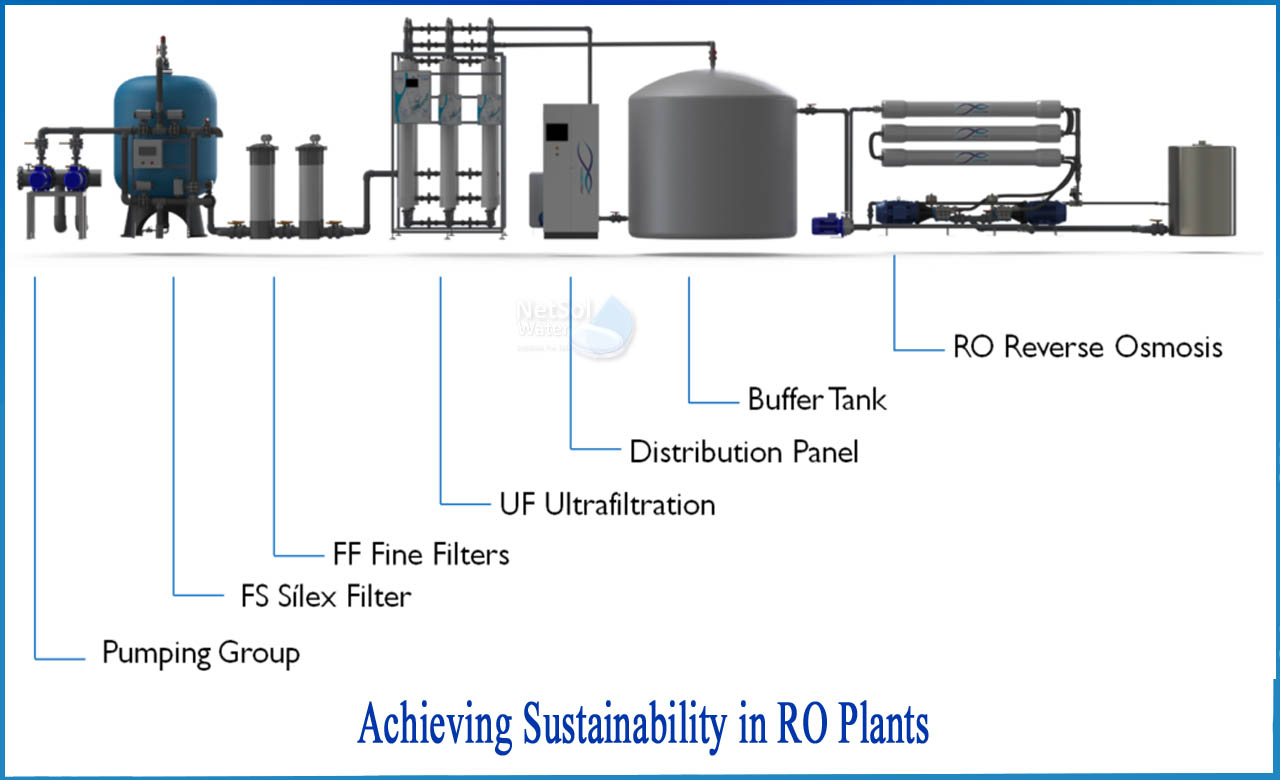If we search for the meaning of sustainability, it goes like this:
Sustainability entails addressing our own demands without compromising future generations' ability to meet their own.
Now if we search for the sustainability in RO systems, we can have a wide spread list of benefits which match the sustainable definition and the list goes like this:
1-Environmental Benefits:
Less hazardous waste water is one of the key environmental advantages of employing a reverse osmosis system. This is owing to the fact that the permeate production method does not require any toxic chemicals (pure water).Reverse osmosis is one of the most environmentally friendly methods for treating industrial wastewater.
Another advantage of RO is that it captures and properly disposes off pollutants in the mains water supply. This is without the dangerous chemically saturated water being discharged into the effluent or drain.Without the use of chemicals, resins, or ion exchange beds, our cutting-edge membrane design eliminates pollutants from the water feed.In comparison to a membrane system, the removal and disposal of resins and ion exchange beds at the end of a chemical-based system's life has a large environmental impact.Concentrated pollutants from a RO system can then be released directly into the drain, eliminating the need for a more expensive effluent treatment step.
2-Cost Advantages:
The cost of employing reverse osmosis and membrane elements is reducing, whereas the cost of acid and caustic solutions is increasing.Electricity is the most expensive component of reverse osmosis systems. Because modern water filtration systems use less energy, their operational expenses are modest. An RO system can be integrated into a process and fed straight into the manufacturing line, or it can be fed into a holding tank for storage before being used as needed.Wastewater streams can be filtered by a RO system, lowering disposal costs by recycling the water back into the process.
3-Benefits to Health and Safety:
The fact that no dangerous chemicals are necessary when utilising a reverse osmosis system to generate high-quality water is one of the key health and safety benefits.Acids and alkalis are used in traditional resin-based ion exchange systems, which are extremely toxic.
Reverse osmosis uses smaller, more efficient equipment to replace traditional techniques like chemical treatment.As a result, the opposing hazards of physical handling and the presence of hazardous chemicals on site are eliminated, resulting in a safer working environment for workers.
4-Advantages in Maintenance:
Because it is a self-contained device, the RO system is extremely low-maintenance.It cleans itself and requires very little human intervention. Rather than being actively maintained, it merely requires daily monitoring from on-site workers.This keeps production high while reducing downtime.The process of replacing the pre-filters is simple and takes only a few minutes.The membranes can endure for two to three years, depending on the quality and quantity of the input water.In comparison to a resin-based system, which could take days, 100% of membranes in a particular system could be replaced in hours.
Conclusion:
With so many advantages and benefits, reverse osmosis is expected to become more widely used across industries. It provides less risks to employees, is more efficient, cost-effective, and ecologically friendly, and requires little upkeep.



